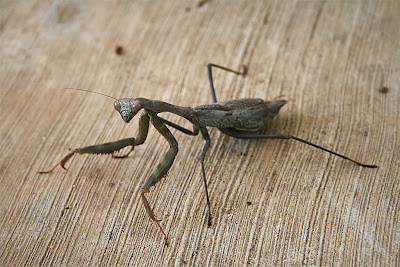I was reminded of how varied the Texas geography is. My normal haunts are in the Hill Country and I've become pretty familiar with the land and many of the trees and plants. This was a nice opportunity to explore another part of Texas.
Floresville is in Wilson County and is in the South Texas geographical region. It's amazing to see how much difference a 100 miles makes.
My guess is my brother's property is pretty typical for the region. The soil is very sandy, not like the rocky, limestone and caliche we have here.
He only had a couple of Live Oaks (Quercus virginiana) while they are the predominant tree here. He also had a Walnut (Juglans nigra) tree and I think there were quite a few in the neighborhood. They are rare in our part of the Hill Country.
The predominant tree was the Blackjack Oak (Quercus marilandica). We have some on our property but it is not common. The ones in South Texas were also taller than the ones we have, probably due to the soil and rainfall.
 |
| Many Blackjack Oaks |
He also had a nice stand of Little Bluestem (Schizachyrium scoparium) grass. It was the predominant native grass in his neighborhood. The predominant grass we have is King Ranch Bluestem (Bothriochloa ischaemum), which is not native. We have some Little Bluestem and it might be the most common native grass we have. It was nice to see it doing so well down there.
 |
| Little Bluestem everywhere! |



